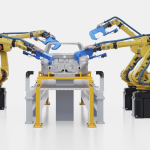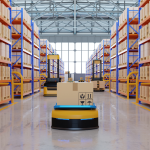The fire that shut down Heathrow last week exposed a deeper issue: the critical dependence global supply chains still place on single points of failure. For leaders in logistics and operations, it’s a reminder that contingency planning can no longer be theoretical.
More Than Disruption: Heathrow’s Role as a Critical Trade Gateway
Heathrow may be known globally for passenger traffic, but its cargo function is often underappreciated — until it stops. As the UK’s largest port by value, it moved over £198.5 billion worth of goods in 2023, accounting for more freight than all other UK airports combined.
When power went down on March 21 following a fire at a West London substation, over 1,300 flights were cancelled. While UPS and other operators acted quickly to divert and recover inbound volumes, there was no escaping the backlog — particularly for time-sensitive and high-value goods such as perishables, pharma, and electronics.
The outage, which also knocked out backup systems, raises uncomfortable questions about resilience across both infrastructure and supply networks. As John Manners-Bell of Transport Intelligence pointedly remarked, “A fire at a single power substation bringing one of the world’s busiest airports to a complete halt? Someone has been asleep at the wheel.”
Resilience Rhetoric vs. Operational Readiness
Commentary since the incident has largely converged on one theme: supply chain fragility. For years, resilience has been a keynote topic — yet when Heathrow halted, the cascading operational impact revealed how few businesses are truly prepared for shocks to major freight nodes.
As Dr. Florian Lücker of Bayes Business School noted, “Companies failing to have [contingency] processes in place may experience some stock-outs… as well as additional costs of interrupted goods flow, idle machinery and workers who cannot complete their jobs.”
These aren’t abstract risks. They affect throughput, manufacturing uptime, working capital, and ultimately customer delivery — particularly in sectors with constrained lead times or regulatory conditions.
What’s more, the incident reminds us that digital contingency alone is insufficient. The interdependence between physical infrastructure, energy systems, and IT networks is now so tight that a disruption in one often bleeds into another — something no amount of software failsafes can fully counteract.
Supply Chains Still Rely on Hope More Than Design
A week after the Heathrow shutdown, the question isn’t whether cargo recovered — it’s whether anyone meaningfully updated their contingency playbooks. This wasn’t a cyberattack, weather event, or geopolitical shock. It was a fire. One power substation.
Yet that was enough to disrupt the UK’s largest port, affecting flows in and out of Europe’s biggest aviation hub. If that doesn’t compel change, what will?
This incident revealed something uncomfortable: many supply chains still rely on assumptions of availability, access, and uptime that simply no longer reflect operational reality in 2025. Resilience, when properly embedded, isn’t about backup generators or insurance policies. It’s about anticipating physical failure and building structural alternatives before they’re needed.







